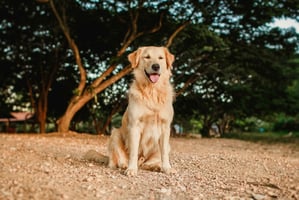Bedlington Terriers are smart and loyal dogs, making them popular pets. But, like all canines, they...
The Ultimate Guide to Bluetick Coonhound Training
The Bluetick Coonhound is a loyal, high-energy breed that requires a lot of exercise and training. This guide will provide you with all the information you need to know about Bluetick Coonhound training, from the basics to the advanced techniques. Learn how to keep your Bluetick Coonhound happy and well-behaved with this comprehensive guide.
Basics of Bluetick Coonhound Training
The first and most important step to successful Bluetick Coonhound training is to establish a bond between you and your pup. Spend time getting to know each other and get plenty of playtime and exercise together. This will help create a strong bond of trust between you and your Bluetick Coonhound.
It is important to start training your Bluetick Coonhound as soon as possible. Bluetick Coonhounds are very intelligent, but they can also be stubborn and independent. Early training is key to getting your pup to understand the rules and learn basic obedience commands.
Before you start training, it is important to understand the basics of positive reinforcement. Positive reinforcement is a method of training where you reward your pup for good behaviour with treats, praise, or playtime. This type of training is the most effective way to teach your pup new commands and reinforce good behaviour.
Potty Training
Potty training is one of the most important parts of Bluetick Coonhound training. A successful potty training routine will help keep your home clean and free from accidents. The key to successful potty training is consistency and patience.
Start by establishing a regular potty schedule. Take your pup out to the same spot at the same time every day for potty breaks. Praise your pup for going potty in the right spot and reward them with a treat. If your pup has an accident, do not scold them. Just take them outside and try again.
It is also important to create a potty cue. This is a phrase or sound that you use when you take your pup outside to go potty. This will help them associate the phrase or sound with the action of going potty. Over time, your pup will learn to go potty when they hear the cue.
Crate Training
Crate training is an important part of Bluetick Coonhound training. A crate can help keep your pup safe and secure when you are not home. It can also help with potty training and prevent your pup from getting into trouble when you are not around.
When crate training your Bluetick Coonhound, it is important to make the crate a positive experience. Put a comfortable bed or blanket inside the crate and make sure the crate is the right size for your pup. Put treats or toys inside the crate to make it a fun and inviting place. Never use the crate as a punishment.
When you first introduce your pup to the crate, let them explore it on their own. Do not force them inside. Once they are comfortable, you can start closing the door for short periods of time. Gradually increase the amount of time they are in the crate until they are comfortable staying in it for several hours at a time.
Obedience Training
Obedience training is essential for any Bluetick Coonhound. Obedience training will help your pup understand the rules of the house and learn basic commands such as sit, stay, come, and down. It will also help with behavioural issues such as jumping, barking, and chewing.
When training your Bluetick Coonhound, it is important to be consistent and patient. Start by teaching your pup simple commands such as sit and stay. Reward your pup with treats or praises when they do something correctly. If your pup does not understand a command, do not scold them. Just take a step back and try again.
It is also important to keep training sessions short and fun. Bluetick Coonhounds have short attention spans, so it is best to keep training sessions short and sweet. If your pup is getting bored or frustrated, take a break and try again later.
Socialisation and Leash Training
Socialisation and leash training are important for any Bluetick Coonhound. Socialisation will help your pup get used to other dogs and people and prevent behavioural issues such as aggression. Leash training will help you keep your pup under control when you take them out for walks.
Start socialisation training early. Take your pup to puppy socialisation classes or dog parks and let them interact with other dogs. Make sure to reward your pup with treats or praise when they interact with other dogs in a positive way.
Leash training can be tricky, but it is important. Start by introducing your pup to the leash and reward them with treats when they get used to it. Once your pup is comfortable with the leash, start taking them for short walks. Make sure to reward them with treats or praises when they walk nicely on the leash.
Troubleshooting
Training your Bluetick Coonhound can be difficult at times, but it is important to stay patient and consistent. If your pup is not responding to commands or having behavioural issues, there are a few things you can do:
- Stay positive: Do not scold your pup for making mistakes. Praise them for good behaviour and reward them with treats or playtime.
- Be consistent: Consistency is key when training your Bluetick Coonhound. Make sure you are using the same commands and praising or rewarding your pup for good behaviour every time.
- Short sessions: Bluetick Coonhounds have short attention spans, so it is best to keep training sessions short and sweet.
- Patience: Training your Bluetick Coonhound takes time and patience. Do not expect results overnight.
Conclusion
Bluetick Coonhound training is an important part of owning a Bluetick Coonhound. With the right training techniques, you can keep your pup happy and well-behaved. Start by establishing a bond between you and your pup and then move on to potty training, crate training, obedience training, socialisation, and leash training. If you are having trouble with training, stay positive, be consistent, keep training sessions short, and be patient.
With the right training, your Bluetick Coonhound will be a loyal and obedient companion. Follow the tips in this guide and you will be on your way to having a happy and well-behaved pup.



